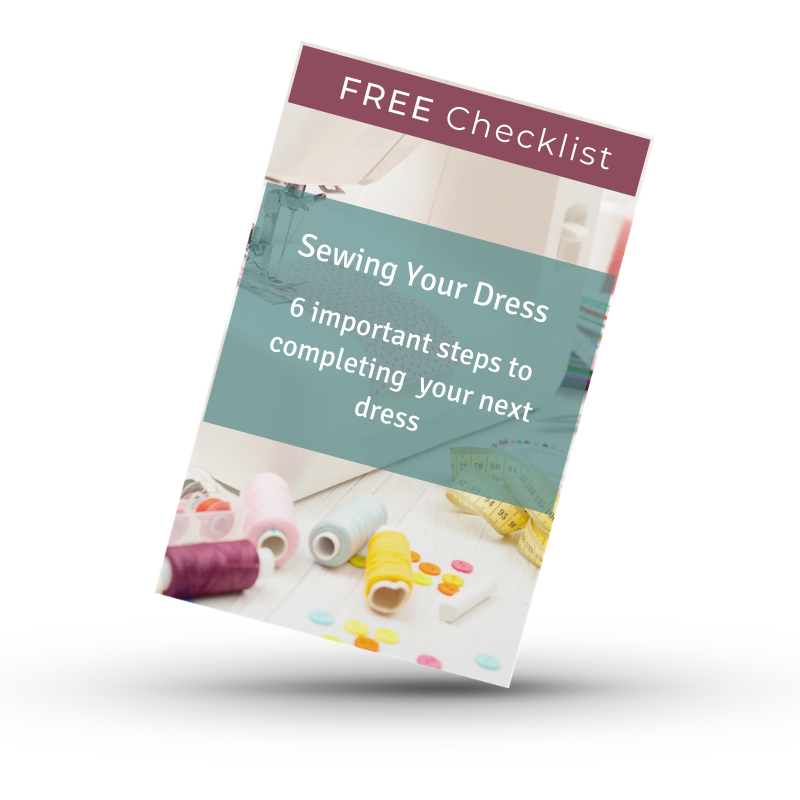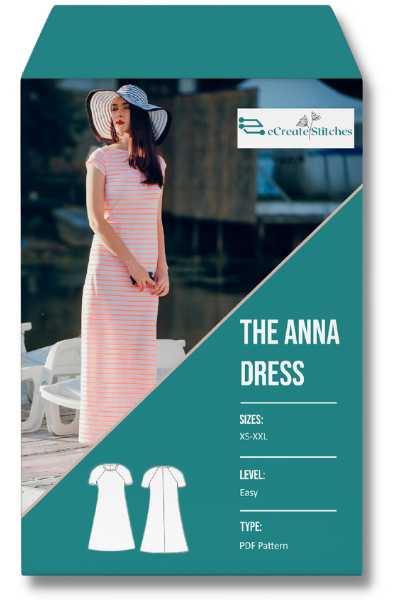
Fabric type plays a big part in successful dressmaking
And just thinking about fabric makes me want to go fabric shopping.
Kind of like thinking about your favorite food makes the mouth water.
Because the best part about sewing is buying fabric, right?
And who doesn’t like fabric shopping?
the best knit fabric to buy

Do you buy fabric only because it’s pretty? Or are there other reasons?
I used to mostly pay attention to the color and design of the fabric rather than what type it was, until I sewed too many dresses that ended up disasters.
Like “this dress doesn’t fit at all” disasters. “Hide it under a beautiful sweater” disasters. Or just plain “throw it away” disasters.
Avoiding stress and disasters became of high importance. Taking very careful note of what type of fabric I was buying became the main focus.
I am sure you want to avoid disasters and stress as much as I do.

So the next time you go fabric shopping (tomorrow? 😉) steer away from any beautiful fabric that is not the type you know or even think will cause you stress.
It is kind of sad to think of all the beautiful fabric you need to avoid. And it takes a bit of grit to by-pass them.
But really, what would you rather have, catastrophic dressmaking or victorious dressmaking?
Really, there’s lots of gorgeous fabric that is the type you will be able to sew without risking your sanity.

Now, I’ll tell you my favorite types of knit fabric that I find easy to sew, and you can take it from there.
Double brushed is probably my favorite because it’s more drapey than some others.
Ponte de Roma comes next. It’s a stable knit, has less drape than double brushed, but is not as thick as Liverpool.
And yes, Liverpool knit is next. I like how stable it is and easy to sew.
So be nice to yourself and choose fabric types that are easy for you to sew.
the best pattern and fabric pairing

Have you ever used the same pattern on different pieces of fabric, only to find that each dress fit completely different?
Me too. 😁
Knit fabrics are so varied, which makes sewing with them so complicated.
So what really makes it so complicated?
Is it me?
I want to buy that beautiful fabric even if it’s going to be hard to sew. That means I am making it complicated for myself.
The solution is that I need to narrow my choices down and only choose fabrics that are going to be easy for me to sew.

They also need to have close to the same stretch percentage so that my patterns will basically work for all of them.
All patterns come with fabric recommendations, which means that if we use fabric that does not match that the pattern will not fit correctly.
Patterns are specifically designed for only certain types of fabric and if we veer off from that too far, we end up with disasters.
And that’s why using knit fabric with a pattern designed for woven fabric won’t work.
The same goes for the other way around, using woven fabric with a pattern designed for knit fabric. Although that way won’t be as disastrous since it will most likely turn out too big.

story
Here’s a story about a dress fail. The fail wasn’t really because of using the wrong type of fabric, nor was it a complete fail, but it didn’t really turn out that great either.
I was maybe on my third year of dressmaking experience so there were a lot of experiments that didn’t turn out.

My mom had a bunch of scraps of different colored broadcloth, (or was it my friend’s mom, I kind of forget?).
Well, this friend and I decided to make ourselves dresses out of those scraps. (Friend, if you’re reading this do you remember? 😂)
These were going to be “beach” dresses.

And instead of a coat of many colors these were going to be dresses of many colors. We got together one fine day, and our scissors and patterns got busy.
Bodices ended up in 4 different colors, skirts at least that many, and sleeves different from each other.
It could even be that the grainline of the separate pieces weren’t all the same way because I remember my dress not hanging quite right.
I think at one point the serger managed to cut a whole in one of the dresses which made for another added color in the form of a patch.
Needless to say we had a pile of fun even though we never really wore those dresses.
Conclusion

Choosing fabric type that matches the recommendations on your pattern AND the type of fabric that is low stress for you.
Oh, and one more thing. For less stress, test any new pattern with the same fabric type as you plan to use for the finished dress.
And last but not least…what type of knit fabric is your favorite?
Comment below! 👇










Double brushed 👍
Yay! 👏